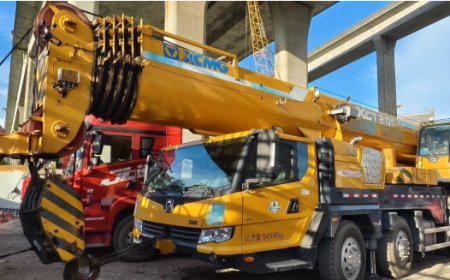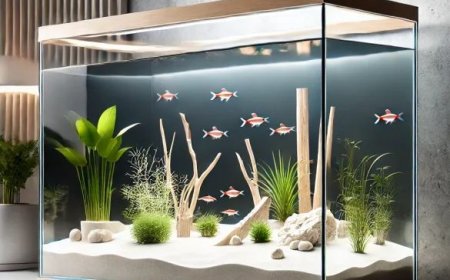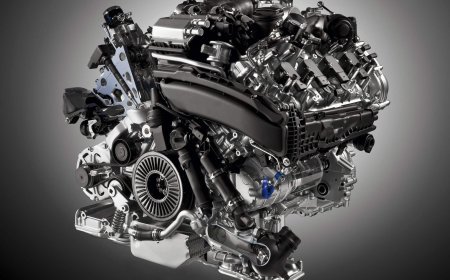The Future of Sustainable Travel: Innovations in Recreational Vehicles and Electric Vehicles
Explore innovations in electric and recreational vehicles shaping the future of sustainable travel.

Sustainable travel is becoming more accessible day by day. And this is getting exciting as technology is improving. Recreational vehicles (RVs) and electric vehicles (EVs) are leading the way at the time. With innovative designs and features, these vehicles aim to reduce environmental impact. These not only support eco-friendly travel but also offer a more convenient and enjoyable experience. Also, technologies like graphene coating are transforming the future of sustainable travel.
Electric Recreational Vehicles: A Sustainable Travel Revolution
Electric Road trip vehicles are one of the most significant innovations in sustainable travel. Traditional travel trailers rely on diesel or petrol, which contribute to carbon emissions. Electric options, on the other hand, use battery-powered systems that are clean and quiet.
One example is the Pebble Flow. This is a fully electric recreational vehicle that includes a 45 kWh battery. This battery is paired with solar panels, enabling off-grid living for extended periods. This vehicle also integrates energy-efficient appliances, further reducing power consumption.
Teslas Semi Motorhome concept takes things a step further. This flawlessly combines long-range capabilities with luxury. The vehicle includes solar-powered systems to support its energy needs. It can travel over 500 miles on a single charge. These features make electric vehicles a game-changer. This is for travellers seeking a greener way to explore the world.
EV Innovations for Everyday Travel
Electric vehicles are evolving rapidly. They are offering better performance, range, and convenience. For example, the Hyundai Ioniq 9 is an all-electric SUV that offers a range of 335 miles. Its aerodynamic design reduces energy use while maintaining spacious interiors.
EV charging infrastructure is also expanding. Rivian has opened its charging network to all EV brands, making charging more accessible and convenient. This move aligns with the industrys push towards universal charging standards, simplifying long-distance travel for EV owners.
Additionally, hybrid models remain a popular choice for people transitioning from traditional vehicles to fully electric ones. Chinese automakers like BYD are leading the way with hybrids that offer extended ranges and low emissions.
The Rise of Solar-Powered Features
Solar power is becoming a standard feature in sustainable vehicles. Many modern caravans now come equipped with solar panels that can power appliances, charge batteries, and even support electric vehicles.
The Living Vehicle is a prime example of this innovation. It features a robust solar energy system capable of supporting year-round habitation. This caravan is designed to reduce reliance on external power sources, making it ideal for off-grid living.
Another impressive design is the eTH Recreational Vehicle, which features retractable solar panels generating over 25 kWh of energy. This setup allows travellers to enjoy up to a week of off-grid capabilities, ensuring comfort without compromising sustainability.
Consumer Trends Driving Sustainability
The shift towards sustainable travel is also driven by consumer demand. People are increasingly prioritising eco-friendly options for both daily commutes and recreational trips. Sales of electric vehicles rose by 7.2% in 2024, while hybrid sales increased by 32.6%.
Despite this growth, challenges remain. Concerns about EV reliability and limited charging infrastructure continue to deter some buyers. However, ongoing improvements in technology and infrastructure are addressing these issues.
For example, Kias PV5 WKNDR camper van is designed specifically for off-grid living. It includes solar panels, an extending rooftop tent, and energy-efficient systems, providing an appealing option for modern travellers.
Energy Efficiency and Reduced Waste
Energy efficiency is a critical focus in the development of sustainable vehicles. Advances in battery technology are improving the efficiency of both Recreational and Electric Vehicles.
Lithium-ion batteries are now more durable and capable of storing larger amounts of energy. Some models also incorporate graphene technology, which enhances thermal performance and reduces degradation over time. These improvements extend battery life, making sustainable travel more practical and cost-effective.
Moreover, modern vehicles are designed to reduce waste. Lightweight materials and streamlined designs improve fuel efficiency, while recycled components are increasingly used in vehicle production. These steps contribute to a more sustainable automotive industry.
Digital Integration for Smarter Travel
Technology plays a vital role in making sustainable travel more accessible. Many vehicles now include digital systems that optimise energy use and improve convenience.
For instance, some Campervans come with smart energy management systems. These systems monitor energy consumption in real-time, helping users optimise their power use. Features like automatic energy-saving modes and remote control via smartphone apps make it easier to manage resources efficiently.
Similarly, electric vehicles often include advanced navigation systems that identify the most efficient routes and locate nearby charging stations. These tools reduce range anxiety and make EV travel more seamless.
The Role of Design in Sustainability
Sustainable travel isnt just about energy efficiency; its also about smart design. Vehicle manufacturers are focusing on designs that reduce drag, improve aerodynamics, and enhance overall efficiency.
For example, EVs like the Tesla Model 3 feature sleek, minimalist designs that reduce air resistance. Similarly, recreational vehicles like the Pebble Flow use lightweight materials and compact layouts to minimise energy consumption.
Interior designs are also evolving. Many adventure vehicles now include modular furniture and multi-purpose spaces that maximise functionality while keeping the footprint small. These designs cater to the needs of modern travellers while prioritising sustainability.
Overcoming Challenges in Sustainable Travel
Despite significant progress, there are still hurdles to overcome in sustainable travel. One of the biggest challenges is the need for widespread charging infrastructure for electric and recreational vehicles. Governments and private companies are investing in expanding networks, but more work is needed to make charging as convenient as refuelling.
Another challenge is the cost of sustainable vehicles. While prices are gradually decreasing, they remain higher than traditional options. However, government incentives and long-term savings on fuel and maintenance are encouraging more people to make the switch.
The Future of Sustainable Travel
The future of sustainable travel is bright. Innovations in these vehicles are making eco-friendly travel more accessible, efficient, and enjoyable. From solar-powered systems to advanced battery technologies, these vehicles are setting new standards for sustainability.
In conclusion, adopting advanced solutions like Automotive Paint Protection can further enhance the efficiency and longevity of these vehicles. As technology continues to evolve, sustainable travel will become the norm, benefiting both travellers and the planet.





























